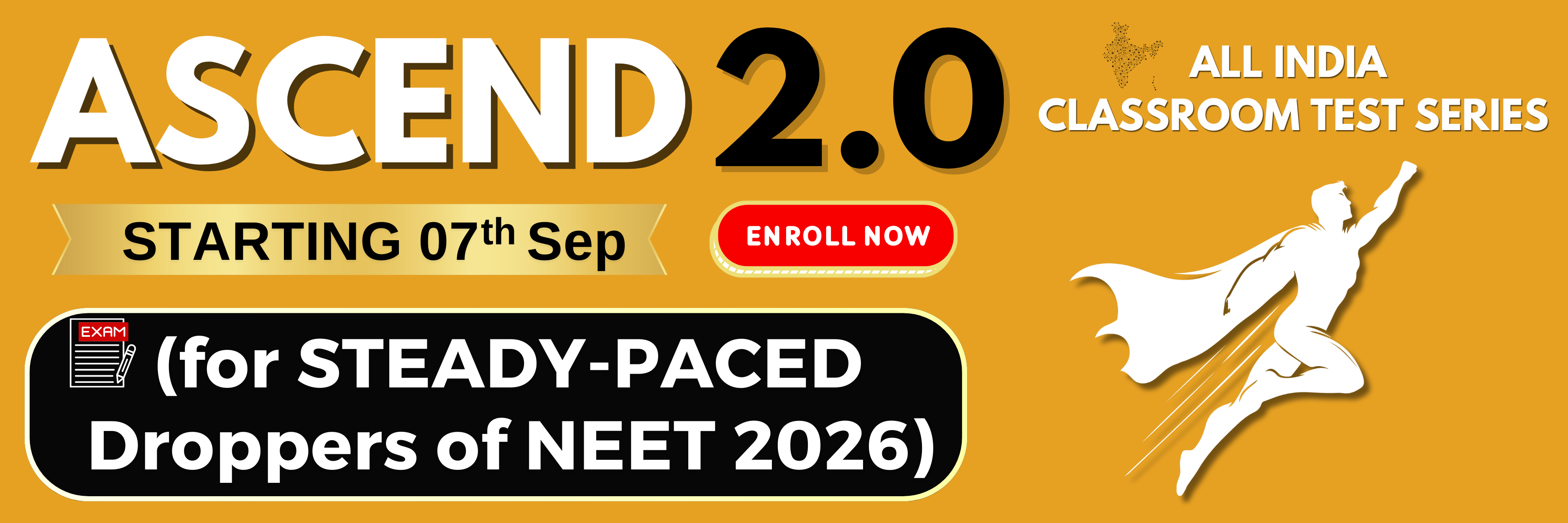Select Question Set:
Mycoplasma:
I:
completely lack a cell wall
II:
are the smallest living cells known
III:
can survive without oxygen
1.
Only I and II are true
2.
Only I and III are true
3.
Only II and III are true
4.
All I, II and III are true
Subtopic: Kingdom Monera: Actinomycetes & Mycoplasma |
93%
From NCERT
Please attempt this question first.
Hints
Please attempt this question first.
Both Archaebacteria and Eubacteria:
| I: | have a similar structure of cell wall |
| II: | are members of Kingdom Monera |
1. Only I is correct
2. Only II is correct
3. Both I and II are correct
4. Both I and II are incorrect
Subtopic: Kingdom Monera: Bacterial Classification |
82%
From NCERT
To view explanation, please take trial in the course.
NEET 2026 - Target Batch - Vital
Hints
To view explanation, please take trial in the course.
NEET 2026 - Target Batch - Vital
Which of the following statements is incorrect regarding Mycoplasma?
| 1. | These organisms are naturally resistant to antibiotics that inhibit protein biosynthesis |
| 2. | These organisms are naturally resistant to antibiotics that target the cell wall |
| 3. | These organisms are naturally resistant to antibiotics that inhibit DNA replication |
| 4. | These organisms are naturally resistant to antibiotics that inhibit folic acid metabolism |
Subtopic: Kingdom Monera: Actinomycetes & Mycoplasma |
60%
From NCERT
Please attempt this question first.
Hints
Please attempt this question first.
One of the major compounds of the cell wall of most fungi is:
| 1. | peptidoglycan | 2. | cellulose |
| 3. | hemicelluloses | 4. | chitin |
Subtopic: Kingdom Fungi: Introduction |
96%
From NCERT
To view explanation, please take trial in the course.
NEET 2026 - Target Batch - Vital
Hints
To view explanation, please take trial in the course.
NEET 2026 - Target Batch - Vital
T.O. Diener discovered a
| 1. | free infectious RNA | 2. | free infectious DNA |
| 3. | infectious protein | 4. | bacteriophage |
Subtopic: Virus, Viroids & Prions |
87%
From NCERT
To view explanation, please take trial in the course.
NEET 2026 - Target Batch - Vital
Hints
To view explanation, please take trial in the course.
NEET 2026 - Target Batch - Vital
Identify the incorrect statement regarding heterotrophic bacteria?
| 1. | They are most abundant bacteria in nature |
| 2. | Many of them are important decomposers |
| 3. | They play a great role in recycling nutrients like nitrogen, phosphorus, iron and sulphur |
| 4. | They are helpful in making curd from milk, production of antibiotics, fixing nitrogen in legume roots, etc. |
Subtopic: Kingdom Monera: Bacterial Classification |
61%
From NCERT
Please attempt this question first.
Hints
Please attempt this question first.
Match each item in Column I with one in Column II and select the correct match from the codes given:
Codes:
| Group of protozoans | Example | ||
| A. | Amoeboid | P. | Entamoeba |
| B. | Flagellated | Q. | Paramecium |
| C. | Ciliated | R. | Trypanosoma |
| D. | Sporozoan | S. | Plasmodium |
| A | B | C | D | |
| 1. | Q | S | P | R |
| 2. | S | Q | R | P |
| 3. | P | R | Q | S |
| 4. | R | P | S | Q |
Subtopic: Protozoa |
91%
From NCERT
Please attempt this question first.
Hints
Please attempt this question first.
In members of Basidiomycetes:
| 1. | Mycelium is unbranched and coenocytic |
| 2. | Sex organs are absent and plasmogamy does not take place |
| 3. | Asexual spores are not found but vegetative reproduction by fragmentation is common |
| 4. | Basidiospores are produced endogenously on the basidium |
Subtopic: Kingdom Fungi: Basidomycetes |
76%
From NCERT
Please attempt this question first.
Hints
Please attempt this question first.
Both Mycoplasma and Euglenoids:
1. can survive without oxygen
2. are unicellular eukaryotes
3. lack cell wall
4. have two flagella
1. can survive without oxygen
2. are unicellular eukaryotes
3. lack cell wall
4. have two flagella
Subtopic: Kingdom Monera: Actinomycetes & Mycoplasma | Kingdom Protista: Euglenoids |
74%
From NCERT
Please attempt this question first.
Hints
Please attempt this question first.
Mycelium branched and septate, asexual spores conidia produced exogenously and sexual spores produced endogenously are the features of fungi belonging to:
| 1. | Phycomycetes | 2. | Ascomycetes |
| 3. | Basidiomycetes | 4. | Deuteromycetes |
Subtopic: Kingdom Fungi: Ascomycetes |
85%
From NCERT
Please attempt this question first.
Hints
Please attempt this question first.
Select Question Set:






